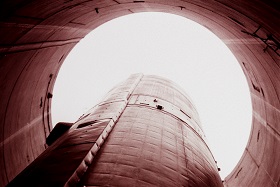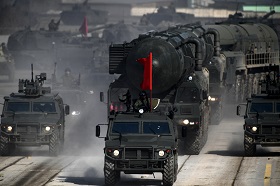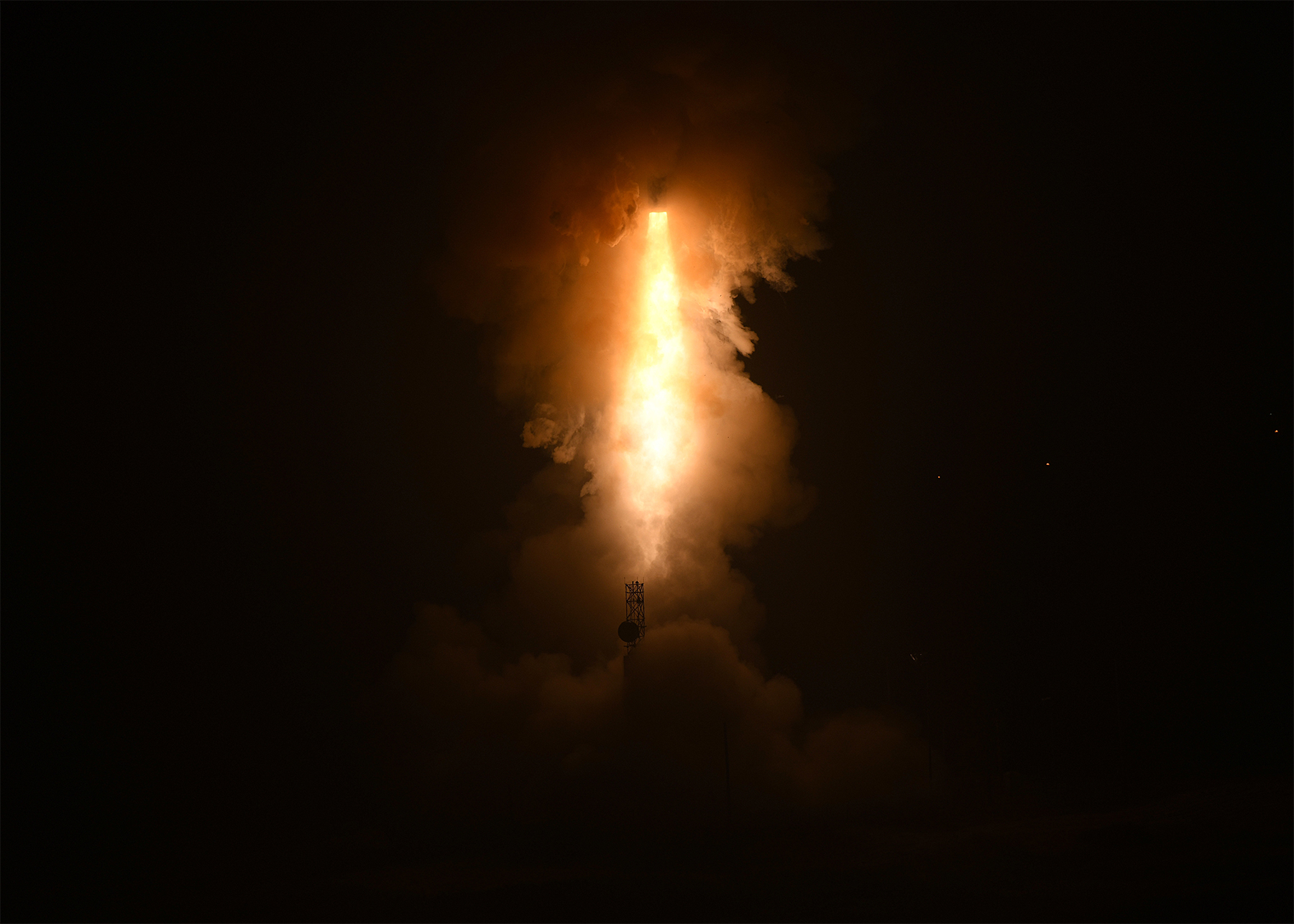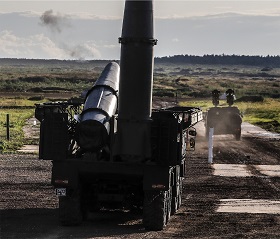On December 4–5, 2019, the Supervisory Board of the International Luxembourg Forum on Preventing Nuclear Catastrophe held its 13th meeting in Geneva. The Forum participants discussed the current state of nuclear non-proliferation and arms control, threats to global strategic stability, possibilities for preventing an arms race and maintaining control over strategic weapons after 2021. Experts also presented their vision of ways out of the current crisis, including prolongation of the Prague New START.
At the event, RIAC expert Ilya Kramnik spoke with Aleksey Arbatov, Vice-Chairman of the Forum’s Organizing Committee, Head of the Center for International Security at Primakov National Research Institute of World Economy and International Relations (IMEMO) of the Russian Academy of Sciences (RAS), and Academician of the RAS. The conversation focused on the state of the treaty regime in reducing strategic offensive weapons, as well as the regime's prospects.
Mr. Arbatov, the Prague New START is coming to an end. What are the chances of it being prolonged and what would be the political consequences of this not happening?
The chances are very hard to estimate. Any forecast is based on some predictable trends, whereas the politics of the Trump Administration are unpredictable. Common sense says that the US has no grounds for refusing to prolong the Treaty. Primarily because the transparency and predictability stemming from START have always been of more significance for the US than for the USSR and Russia. The reason is that the US has, from the outset, been more open about its strategic programs than Russia and certainly than the USSR. The US does not do this for the sake of the treaties: under them, both parties disclose their information in equal measure and provide an opportunity for verifying it by using national technical equipment, inspections on the ground, notifications, equipment demonstrations. The US has been more open simply because Congress plays a far more significant role in decisions on these issues. The lion's share of what is made accessible to Congress is open format, even though there are closed sessions and classified materials. This is because Congress is not appointed, its members are elected, and Congresspersons and Senators need their voters to know where they stand, what an important role they play in this process, and their mechanism has requisite stipulations.
This information became more open after the time of McNamara, who began appointing civilians as top Department of Defense officials, as is presupposed by the US Constitution. McNamara involved the so-called “think tanks”, research centres unaffiliated with state agencies, ranging from the RAND Corporation to many others. Consequently, the information on the US strategic forces provided to Russia under the Treaty is not the most important part of the total volume of information we have. Our secret services and research centres carefully study all the documents that are made public, such as Congressional hearings, reports, etc.
The situation in Russia is different. Certainly, Russia is immeasurably more open in this area than the USSR used to be. Yet this openness stems largely from talks and agreements. This is because it has only gradually dawned on the Soviet military and political leadership (and this is something the Russian military and political leadership understands) that the information we disclose to our probable partners, as we sometimes call them, should, by the same token, be disclosed to our public. It is used by research centres, institutes, universities and individual experts, yet the bulk of the information in Russia remains classified.
Consequently, it is more difficult for Americans to obtain this information in Russia, and they rely to a greater extent on the Treaty and the verification system. Consequently, common sense dictates that preserving the Treaty equals not so much the restrictions it imposes on the Russian strategic forces as the systems of checks, verifications, inspections, transparency, which, bilaterally speaking, are more important for the US than for Russia. Consequently, it is hard to imagine an American president not prolonging the Treaty.
Yet the last four years have shown that, quite frequently, this is just what the current Administration does: neither the Treaty on Open Skies that they threaten to dismantle nor the INF Treaty runs counter to the interests of the US. Yet the US is withdrawing from them and does not wish to make any compromises to salvage them. In doing so, the US proceeds from the Trump Administration's political sentiment and ideology. Consequently, I will not attempt to make any predictions. I can only reiterate that common sense says that it is in the USA’s interests in every respect to prolong the Treaty, but this is no guarantee in the current situation.
As regards weapons systems threatening strategic stability, what do you think is their hierarchy now? How significant is the effect of anti-missile systems, long-range non-nuclear weapons, anti-satellite weapons?
Regarding anti-missile defence, its effect is certainly greater than it was 10, 20, 30, 40 years ago. The Treaty was concluded in 1972, nearly 50 years ago. It remained in force for 30 years, and anti-missile systems have been severely restricted. Today, these restrictions have been lifted. Still, the US does not have an anti-missile system that could bring Russia’s nuclear deterrence capabilities into question, not only in the first strike but also a retaliatory one. Logically, a retaliatory strike is weaker but, even in this case, the US missile defence system is powerless against Russia.
As regards China, the situation is changing along the same lines. Still, given that China has much smaller strategic forces capable of reaching the US and that they are far more vulnerable than Russia’s, China would have difficulty in penetrating the USA’s missile defences with a retaliatory strike. Yet this situation is changing rapidly because China’s forces are themselves developing rapidly. China has recently demonstrated its new systems and, unless the US makes a titanic effort, its missile defences will cease to be an important factor for China.
High-precision systems as part of a conventional weapons arsenal are a new development and they certainly introduce major uncertainty into strategic stability calculations. This is because, besides protected missile silos and command centres, all other strategic forces are now vulnerable to these systems as they now have sufficient range and precision, which was not the case before. Bombers stationed on airfields are vulnerable, as are submarines in their bases, as are many elements of control systems; early-detection radar stations will also be susceptible, and so on — there are hundreds of such facilities. And the general-purpose forces and medium-range systems will be all the more vulnerable.
If, God forbid, any conventional conflict were to break out in the Black Sea or Baltic basin or airspace, then, given today’s automated control systems and increased speed of weapons, such a conflict could spiral out of control and escalate at lightning speed. Consequently, long-range non-nuclear high-precision systems, in general, are a destabilizing factor, especially when deployed in large numbers.
Odd as it might sound, there are fewer anti-satellite systems today than in the past, even though everyone is talking space now. In the 1960s–1980s, however, such systems were more numerous, and they were actively tested first by the USSR and then by the US. But afterwards, they were largely scaled down. Today, they are being developed again, yet there is no active arms race in space. No weapons at all are being deployed in outer space itself, and the US, Russia, China and India have a single anti-spacecraft system each. Third countries jumping on the bandwagon is something new – this was not the case when the process was bilateral. However, first China and then India tested their anti-satellite systems. Yet it is too early to say that the arms race has moved into space.
Militarization in outer space is moving forward at a tremendous pace, it is true, but this militarization means the use of space for information and control systems. It means spacecraft with diverse functions making it possible to raise strike precision and action coordination to a qualitatively new level. Once again, in the past, when anti-satellite systems were first being developed, satellites serviced primarily strategic nuclear forces. Today, they service all armed forces down to individual infantry persons, like, for instance, such well-known navigation systems as the GPS (NAVSTAR) and GLONASS. This is where militarization is moving forward at a breakneck pace. Both new military-purpose satellites are being created, and many commercial space vehicles are being used for military purposes, becoming dual-purpose satellites.
Additionally, satellites can manoeuvre in their orbits and come into hazardous proximity, so it is logical to suppose that satellites might become the most efficient type of anti-satellite weapon, serving as “space mines.”
In this regard, the media regularly report on inspector satellites and their suspicious manoeuvres.
Yes. And how do we tell whether a satellite is approaching on an inspection mission or practising a fast approach to manoeuvre in times of war and explode, collide or blow up another party's satellite in some other way?
Incidentally, the Russia–China 2007 proposal that a treaty be concluded on non-deployment of weapons in outer space (and we still stand by that proposal) cannot be implemented even theoretically unless there are inspector satellites that can approach any vehicle in orbit and check whether or not it is a weapon. But such inspectors are, in themselves, potential anti-satellite weapons. Generally, as regards space vehicles, the amount of overlapping of different vehicles is very high, and anti-missile systems can be used as anti-satellite ones, both in the US and in Russia.
One recalls the interception of the USA-193 satellite using an SM-3 missile launched from the USS Lake Erie cruiser…
Exactly. Anti-missile systems are used for this purpose, strike missile systems can also be used for this purpose, and here we have China and India. Directed-energy systems, such as our new mobile laser device demonstrated last year during the President’s address, the device that was later named Peresvet by popular vote, is potentially a very powerful anti-satellite weapon.
Based on the above, how should the architecture of a potential START change if (and let’s hope when) the parties do reach a new agreement? What parties should be involved in the new Treaty and what weapons and facilities should it regulate?
If you ask when the talks should start, my answer is “yesterday.” For ten years, there have been no talks on this issue, and then we are surprised that weapons development is outpacing the diplomatic process. If nothing is done for ten years, nothing will be achieved; in fact, it has been 20 years since the 1990s talks, START II and the framework START III, and there has been no serious progress. The 2002 Strategic Offensive Reductions Treaty was concluded, but it has never been effective since the offset rules and the verification system have never been agreed. So the Treaty was up in the air until the new treaty, the Prague New START. However, even though the Prague Treaty did develop verification systems, it set the same limits as SORT. In SORT, the limit was 1,700–2,200 payloads, and the present Treaty limits nuclear forces to about the same range, depending on how air-launched cruise missile are counted. According to the current offset rules, it is one payload per bomber, while I would like to remind you that a bomber can carry up to 20 missiles.
So the limit is really the same, the new systems are not covered in any way, and this stagnation has continued for 20 years really, not just for the ten years since the last treaty. The development of all these new technologies we are discussing thus certainly outpaces the talks. Even so, if serious discussions are launched simultaneously with achieving an agreement on prolonging the Prague treaty, we will have enough time to cover many destabilizing factors, such as the things I’ve mentioned before, like high-precision non-nuclear systems that can exchange strategic strikes. We certainly should be parties to treaties on limiting them.
As regards the format... at the moment, I find it hard to imagine, although there are options, including one with China’s participation. Because China is the only country, in addition to Russia and the US, that is actively developing and building up its weapons. The UK and France are reducing their weapons and are not developing anything new. India and Pakistan are concerned with each other, and their potential is insignificant; the same can be said about North Korea. China is the only state that can double or even triple its nuclear forces over the next decade. It only needs to replace single-warhead missiles with MIRVs, and you have double, triple, quadruple growth, depending on how many warheads their missiles will carry.
Something similar happened in the early 1970s when the US and then the USSR began deploying MIRVs. And the number of warheads grew fivefold in just ten years. Today, China is on the threshold of the same process. So this needs thinking about. We can try to involve China in some restrictions, but this would require significant sacrifices both on the part of China and on the part of Russia and the US, simply because China will not just agree to fix its current lag. China will demand a treaty that would entail US-China parity at least on the weapons systems covered by the treaty. Involving other countries today makes even less sense, and I think that Russia and the US can conclude one more bilateral treaty, taking the China factor into account. For instance, a radical reduction in strategic weapons is already impossible without imposing any restrictions on China. At the next stage, China must be involved in such a treaty.
Would it be correct to say that, as a matter of principle, we are on the threshold of destroying the treaty system? Can the expired agreements (ABM Treaty, the CFE Treaty, the INF Treaty) be followed by the endangered START and TOS and then by the CTBT, Non-Proliferation Treaty and other fundamental agreements?
That is absolutely correct. If the central link falls apart… there are already attempts to undermine the Comprehensive Nuclear Test Ban Treaty; Russia is already being accused of secretly conducting some tests.
The Non-Proliferation Treaty… If this system collapses, its Article 6 goes down with it. And this Article on nuclear disarmament is one of the two main provisions that underlie the Non-Proliferation Treaty as such. The first is the provision for non-nuclear states: you do not develop nuclear weapons, and we help you with peaceful nuclear development; the second provision ensures that we do not enshrine the five states’ monopoly forever; these states will travel the path of nuclear disarmament. If all that collapses, that is it: even if no chain reaction of withdrawals from the agreement starts, the arrangement will simply lose its significance. No one will attend these conferences, no one will comply with IAEA guarantees, and the system runs the risk of falling apart very quickly.
Interviewed by Ilya Kramnik, RIAC expert, military analyst.










